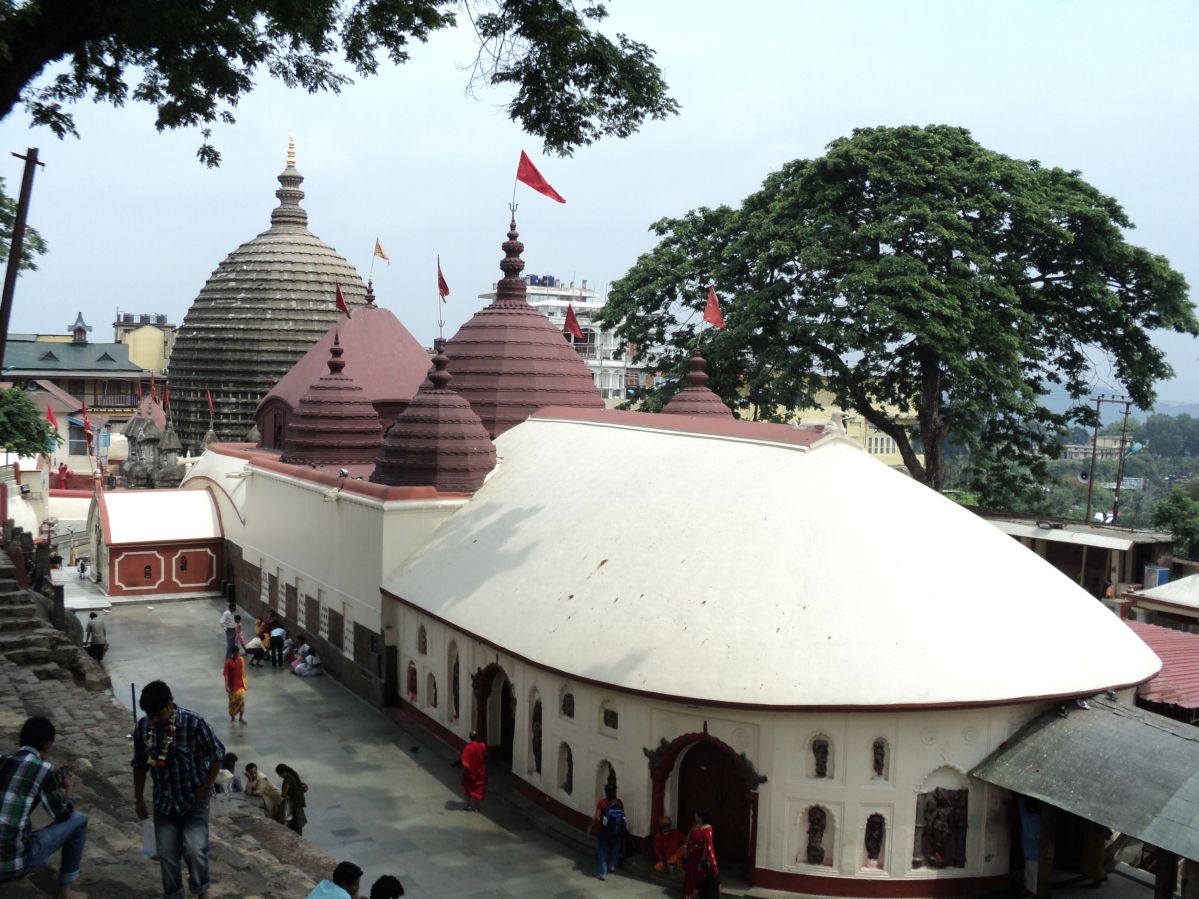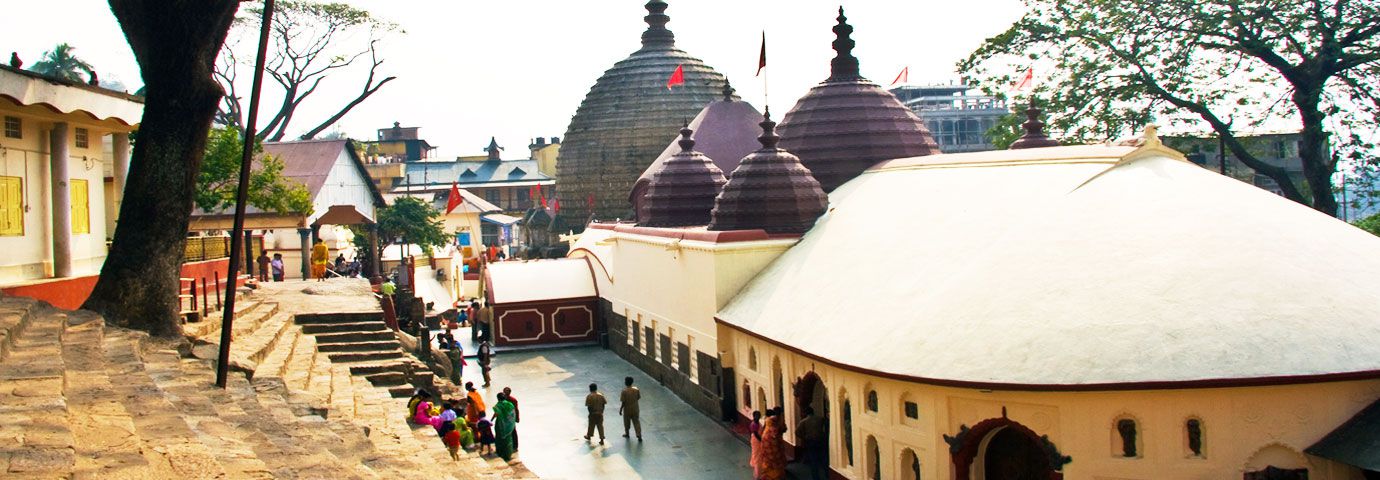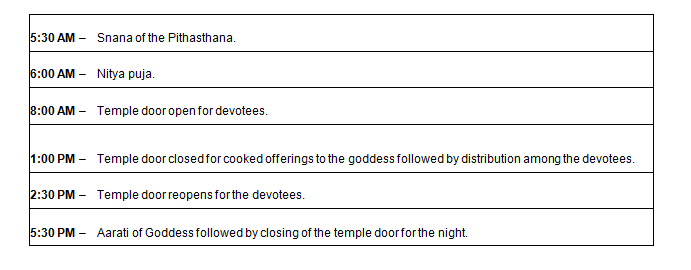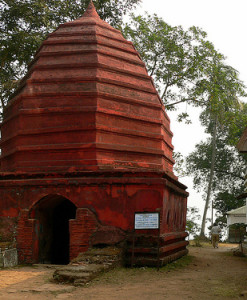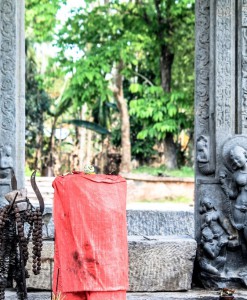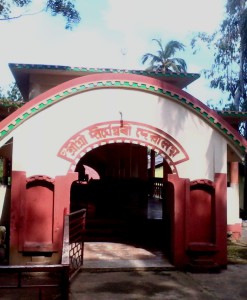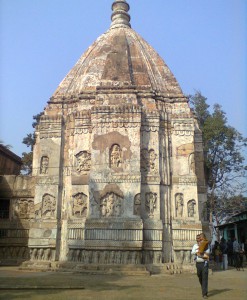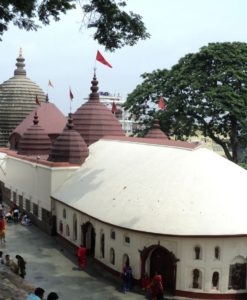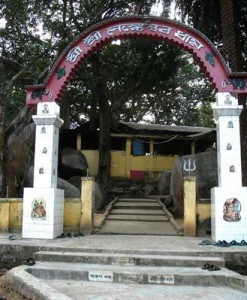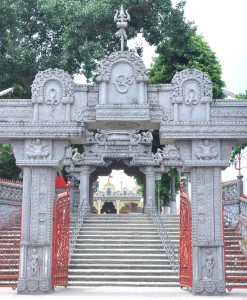No products in the cart.
Kamakhya temple is a famous pilgrimage situated at Guwahati, Assam. The temple is located on the Nilachal hill in Guwahati at about 8 kms from the railway station. The Kamakhya temple is dedicated to the tantric goddesses. Apart from the deity Kamakhya Devi, compound of the temple houses 10 other avatars of Kali namely Dhumavati, Matangi, Bagola, Tara, Kamala, Bhairavi, Chinnamasta, Bhuvaneshwari and Tripuara Sundari.
Kamakhya Temple, Guwahati;
- Temple History
- Legend
- Architecture
- How To Reach The Temple
- Daily Poojas And Festivals
- Videos
- Additional Information
The temple of Kamakhya has a very interesting story of its origin. It is one of the 108 Shakti peetha. The story of the Shakti peeths goes like this; once Sati fought with her husband Shiva to attend her father’s great yagna. At the grand yagna, Sati’s father Daksha insulted her husband. Sati was angered and in her shame, she jumped into the fire and killed herself. When Shiva came to know that his beloved wife had committed suicide, he went insane with rage. He placed Sati’s dead body on his shoulders and did the tandav or dance of destruction.
To calm him down, Vishnu cut the dead body with his chakra. The 108 places where Sati’s body parts fell are called Shakti Peetha. Kamakhya temple is special because Sati’s womb and vagina fell here.
Legend has it that following the destruction of Daksha’s sacrifice and the Rudra Tandava of Shiva, parts of Sati’s body fell at several places throughout India, and these places are revered as Shakti peethas. The reproductive organ of Sati, (the Yoni) is said to have fallen here.
Legend also has it that the supreme creative power of Brahma was challenged by Shakti, the mother Goddess, and that Brahma could thereafter create, only with the blessings of the Yoni, as the sole creative principle. After much penance, Brahma brought down a luminous body of light from space and placed it within the Yoni circle, which was created by the Goddess and placed at Kamarupa.
The temple has a beehive like shikhara. Some of the sculptured panels seen here are of interest. There are images of Ganesha, Chamundeswari, dancing fitures etc. There is no image of Shakti here. Within a corner of a cave in the temple, there is a sculptored image of the Yoni of the Goddess, which is the object of reverence. A natural spring keeps the stone moist.
The temple consists of four chambers: garbhagriha and three mandapas locally called calanta, pancaratna and natamandira. The garbhagriha has a pancharatha plan and rests on plinth moldings that are similar to the Surya Temple at Tezpur, above which are dados from a later period of the Khajuraho or the Central Indian type, consisting of sunken panels alternating with pilasters. The sikhara is in the shape of a bee-hive, which is a characteristic of temples in Lower Assam. The inner sanctum, the garbhagriha, is a cave below ground level and consists of no image but a rock fissure.
The garbhaghrihas of the other temples in the Kamakhya complex follow the same structure—a yoni-shaped stone, filled with water and below ground level.
The current structure has been built during the Ahom times,with remnants of the earlier Koch temple carefully preserved. Temple was destroyed during the middle of second millennium and revised temple structure was constructed in 1565 by Chilarai of the Koch dynasty in the style of medieval temples.
The temple consists of three major chambers. The western chamber is large and rectangular and is not used by the general pilgrims for worship. The middle chamber is a square, with a small idol of the Goddess, a later addition. The walls of this chamber contain sculpted images of Naranarayana, related inscriptions and other gods. The middle chamber leads to the sanctum sanctorum of the temple in the form of a cave, which consists of no image but a natural underground spring that flows through a yoni-shaped cleft in the bedrock.

By Road: The temple is situated 8 kilometer away from Guwahati city, the best way to reach Kamakhya Temple is by cab or a taxi. Guwahati is connected well to others parts of the country.
By Rail: The Temple is well connected through nearest Guwahati railway station (8 kms)
to major cities railway stations like Delhi, Agra, Mumbai, Chennai, Ajmer, Pali, Jaipur, Ahmedabad.
By Air: The Temple can be reached through nearest Guwahati Airport (18.7 Km) which is well connected with regular domestic flights to Delhi, Mumbai, Hyderabad, Bangalore, Chennai and other metropolitan cities.
The General Darshan Timings of Kamakhya Temple at Guwahati (Assam) are as follows. On Special Occasions, like Durga Puja, the timings are modified.
There is no defined Visiting Hours for the Pilgrims and Tourists. They can visit whenever the Temple Remains open, which is from 5:30 in the morning to 10:00 PM in the night. On Special Occasions, these timings get extended.
Durga Puja is celebrated annually during Navaratri in the month of September- October. It is a three day festival attracting several visitors. A unique festival observed here is the Ambuvaci (Ameti) .During this period the temple is closed for three days and opened with great festivity on the fourth day. It is believed to be inauspicious to till the ground or to plant seeds, during this three day period.
Kamakhya devi is famous as the bleeding goddess. The mythical womb and vagina of Shakti are supposedly installed in the ‘Garvagriha’ or sanctum of the temple. In the month of Ashaad (June), the goddess bleeds or menstruates. At this time, the Brahmaputra River near Kamakhya turns red. The temple then remains closed for 3 days and holy water is distributed among the devotees of Kamakhya devi.
There is no scientific proof that the blood actually turns the river red. Some people say that the priests pour vermilion into the waters. But symbolically, menstruation is the symbol of a woman’s creativity and power to give birth. So, the deity and temple of Kamakhya celebrates this ‘shakti’ or power within every woman.

